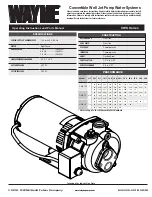
7.
Select
Enabled
and press
OK
.
8.
The keypad beeps once to accept the change and returns to
Antipassivation
.
Recommended settings depend on the type of application the IO module is used for, and are as
follows:
Application
Low Battery Trip
Antipassivation
Operational battery
3.0 V
Outdoor Siren
Siren battery
9.8 V
Enabled
Operational battery
2.3 V
Indoor Siren
Siren battery
9.0 V
Disabled
Standalone IO module
Operational battery
2.3 V
Disabled
Setting supervision windows
There are three wireless supervision options: Short Window, Normal Window and Fire Window. The
PIR sensor and door/window sensors follow the short and normal supervision windows.
•
If a PIR or door/windows sensor does not report within the time specified in Short
Window, the system does not allow the user to arm the system.
•
If a PIR or door/windows sensor does not report within the time specified in Normal
Window, an RF Sensor Lost condition is reported to the central station and a service
message is displayed on the keypad.
868 MHz transmitters typically report every 20 minutes.
Note:
If you are installing a system in Holland or Belgium, you must set the supervision values to 2 hours as long
supervision window. Set the short supervision window in Belgium and Holland to 24 minutes. Fire transmitter
supervision windows should be set to 4 hours.
Smoke detectors follow the fire window. 868 MHz smoke sensors report every 64 minutes. Smoke
detectors follow the fire supervision window only and report to the central station when not reporting
within the fire window.
On the wired keypad the RF Zone Lost event is signalized by three beeps every 5 minutes. On the
wireless keypad the RF Zone Lost event is signalized after 15 seconds from the wake up and then
every 5 minutes from the last signal if the keypad is in the active mode. Please be aware, that entering
a valid code (for example arming/disarming) suppresses beep signalling for 12 hours. This
functionality depends also on the "Beep on RF loss" menu option (see Glossary in the keypad
chapter).
Testing wireless sensors
The Remote Signal Strength Indication Value (RSSI) is a measure of the RF reception and is similar
to the indication on a mobile phone. The value is linked to the level of the signal between the
wireless sensors and the RF receiver. On an 868 MHz system, the RF receiver stores the signal
strength of the transmission it receives from the sensor in a specified zone. The values in this zone
are read as follows:
•
Values over 105: The sensor will not work properly and must be moved to another
location.
•
Values between 105 and 90: The sensor will work but ideally should be moved to
another location.
















































